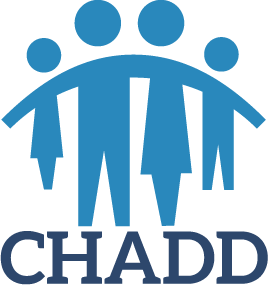What Does New FDA Label Requirement Mean for Parents, Prescribers?

New labeling on extended-release stimulant medications raises questions about the best treatment for ADHD in young children. However, treatment recommendations—which put behavioral management and parent training ahead of medications and recommend holding off on prescribing medications until later—have not changed.
The US Food and Drug Administration now requires extended-release stimulant medications to carry a warning that they may cause weight loss in children six and younger. The FDA states the new labeling will “harmonize” labeling across the types of extended-release stimulant medications.
Medications for ADHD, including stimulant medications, should be delayed until children are older and could benefit from the better symptom control these medications can offer most people. The new labeling would alert medical professionals who may prescribe stimulant medications “off label” to younger children and encourage them to actively monitor young patients’ weight.
The American Psychiatric Association states that medications for cognitive and mental health conditions, like ADHD, provide life-improving, and possibly lifesaving, benefits when prescribed and taken as intended.
“Psychiatric medications are safe, effective, and can be lifesaving if they are taken properly—as directed,” the APA stated in a response to the new labeling. “These drugs provide relief for many young people enabling them to participate fully in treatment, school, social activities, and family life—all key aspects of healthy development.”
Behavioral interventions first, medications later
So, what is the recommended approach to treating ADHD in young children that parents and practitioners should put in place?
A combination of parent training and behavioral management techniques has been the recommended treatment for preschool children with ADHD since at least 2018. Most ADHD professionals before then avoided prescribing medication for very young children based on the available research. Since 2019, the American Academy of Pediatrics has recommended parent training/behavioral management, along with classroom supports if the child is in school, as the first-line treatment for young children. Parents and doctors are encouraged to wait until a child is in kindergarten before considering a formal diagnosis.
The results of many research studies on how behavioral parent training can help families clearly points to why it should be the first-line treatment for young children with ADHD, says George DuPaul, PhD, a professor of school psychology at Lehigh University and a former member of CHADD’s professional advisory board.
“When behavioral parent training is [used by parents] consistently, it can lead to greater parent understanding of behavioral principles, increased use of positive parenting strategies, enhanced parent-child relationships, improvement in child behavior, and possibly delay [the need for medication],” he says.
“Parents of young children with ADHD may need support, and behavior therapy is an important first step,” says Anne Schuchat, MD (RADM, USPHS), a former principal deputy director of the US Centers for Disease Control and Prevention. “It has been shown to be as effective as medicine, but without the risk of side effects.”
Updated labeling for stimulant medications
Max Wiznitzer, MD, co-chair of CHADD’s professional advisory board, reviewed the FDA statement and its new labeling requirements. Dr. Wiznitzer is the interim chief of the division of pediatric neurology at UH Rainbow Babies & Children’s Hospital, and professor of pediatrics and neurology at Case Western Reserve University in Cleveland, Ohio.
He says the statement appears to be a warning about the potential risk of weight loss from the extended-release versions of the stimulant medications. This type of medication has long carried information stating it can cause children and adults to lose weight because they don’t feel as hungry as they would normally.
Medical professionals keep in mind the benefits and risks of any medication they prescribe. Parents play an important role in their children’s treatment and need to ask the doctor any questions they have about a recommended treatment. CHADD also provides detailed information on treatment options and medications at Treatment Overview for Children.
“This means professionals and families need to be well informed about the ADHD diagnosis and treatment options,” Dr. Wiznitzer says. “This includes stimulant medication when clinically indicated, similar to indications for any age. Use the immediate release formulations as the initial trial and consider extended-release formulations (if covered by insurance) after considering benefits and risks or continue with twice or three times daily instant release formulation.”
There are times when stimulant medication is needed by a child aged six and younger, if the child’s ADHD symptoms put them at greater than normal risk of injury, or difficulties in preschool or kindergarten and first grade. Sometimes, medication is prescribed when the child is having trouble making and keeping friends or is being excluded by other children because of behaviors related to their ADHD symptoms.
Dr. Wiznitzer says there are nonstimulant medications prescribers and parents may choose. These can be very helpful for many children, but stimulant medications remain the most effective for the majority of children. A drawback to stimulants at this age can be the strengths to which the medications are manufactured, making it difficult to match the right amount to the young child’s weight or metabolism.
“Remember,” he says, “medication is only part of the multimodal management intervention and, while it can reduce impulsivity and hyperactivity and improve attention, it does not teach how to learn or behave. The families need to implement [medication management] with the appropriate educational and behavior methods.”
More on Preschoolers and ADHD:
- Preschoolers and ADHD
- Evaluating for Childhood ADHD
- Parent Training and Education
- Preschoolers and ADHD: Behavioral Treatments First
- Managing Inattentive ADHD with Psychosocial Treatments
- ADHD Quick Facts: Behavior Management in ADHD Treatment
- Behavior Therapy Recommended as First Line of Treatment for Young Children with ADHD
- Parent Training and Education
- Tips for Help Managing ADHD with Non-Medication Interventions
Join the discussion: What do you of the FDA’s new labeling requirement?
Other Articles in this Edition
What Does New FDA Label Requirement Mean for Parents, Prescribers?
